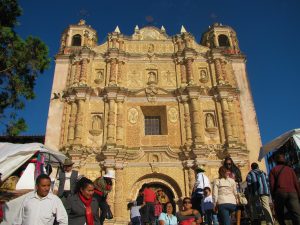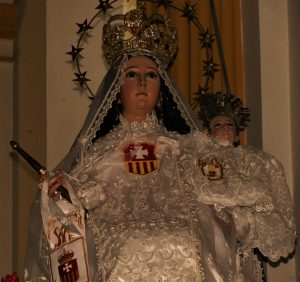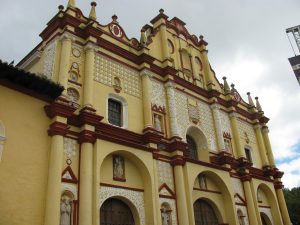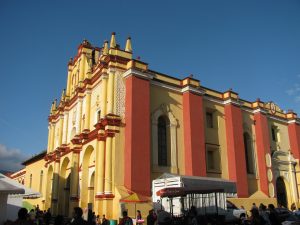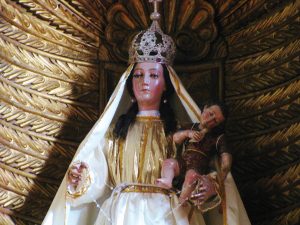MARIAN CHURCHES IN SAN CRISTOBAL de las CASAS, CHIAPAS
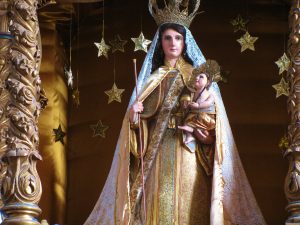
The city of San Cristobal de las Casas was founded in 1528 under the Spanish command of Diego de Mazariego who later became governor of Cuba. It was named San Cristobal in honour of the city’s patron, St. Christopher, and Fray Bartolomew de las Casas (1474-1566), a Dominican friar who spent his life protecting the dignity and rights of the indigenous peoples of the Americas. He was the first bishop of Chiapas.
This city of 40,000 people in the southern state of Chiapas exudes colonial charm with its white stucco walls, red-tiled roofs and cobblestone streets. No one was surprised when it was declared a national historic monument in 1974. It lies in a valley surrounded by the Chiapas mountains and is 2,120 m. (6,954 ft.) above sea level. The atmosphere is not Spanish, however. It is decidedly indigenous and is teeming with Indians in traditional dress who live in the outlying villages. They come to this city because it is the principal market town of the area. Most of these are Mayan-speaking and they come to sell their wares in this city, so favoured by tourists.
The Indian males from nearby Chamula wear black, grey or white wool tunics and a jorongo (a sort of sleeveless jacket) and the males from the town of Zinacante wear reddish-pink tunics and hats adorned with colourful ribbons. And these ribbons are meant to send a message! If a man is married he ties the ribbons down tight. If he is single he lets the ribbons wave in the breeze—signalling that he is available! Women wear the traditional huipil, a white dress decorated with colourful embroidery, a black wool skirt and a red or blue shawl.
With these Christian origins it is not surprising that churches dominate the architectural landscape. The most emblematic symbol of the city is the iconic cathedral. Built originally in 1528 as a modest church devoted to Our Lady of the Assumption it was later remodelled in the Baroque style and completed in 1721. It displays a most unusual façade with “stylized floral details” which provides a striking background for photos. Its colours, in red, yellow, white and black represent the four directions in the Maya world view. The main altar is dedicated to both the Virgin of the Assumption and St. Christopher.
One of the most beloved churches in the city is that of LA CARIDAD which was founded in 1715. The statue of La Caridad, holding the Infant Jesus, is featured on the main altar—and she is shown in military garb, carrying a baton! She was declared the patrona and protectress of the city. The church was established as the first hospital for the Indians in the area. LA CARIDAD is an image of Our Lady which honours the Immaculate Conception. LA CARIDAD is featured as the main photo heading today’s story.
Another Marian church in the city is that of LA MERCED, which was originally built as a male monastery in 1537. It was established by the Mercedarios friars from Guatemala who founded the first convent in the city. Later, in 1749, architect Juan Dios began work on the building of the church you see today. It was finished in 1767. At the centre of the church is the statue of Our Lady of LA MERCED, holding the Infant Jesus. She is celebrated on Sept. 24 with great enthusiasm and the procession in her honour is accompanied by floats and throngs of people dressed in multi-coloured costumes.
Another famous Marian church in the city is that of Santo Domingo, which was constructed in 1547. Its intricate Baroque façade is considered one of the most beautiful and impressive in the city. For this reason it insures that it is also one of the most photographed churches in the entire area. Although the interior is rather plain (in contrast to its exterior) the gilded and sumptuous altarpiece of the chapel of the Rosary is not! It is home to the statue of OUR LADY OF THE ROSARY, notable for its image of the Infant Jesus who is asleep in His mother’s arms!
Any lover of Marian churches would be delighted with San Cristobal de las Casas!
